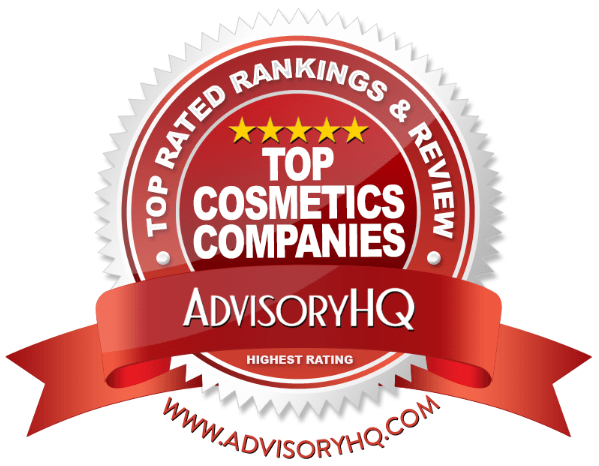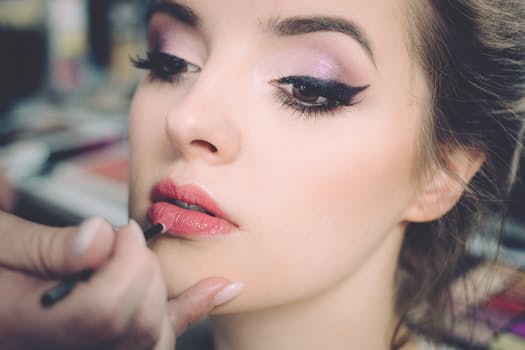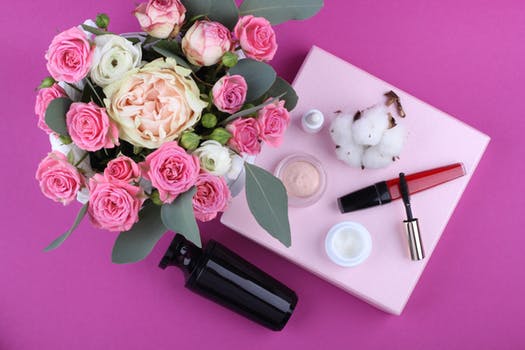2017 RANKING & REVIEW
TOP RANKING COSMETIC COMPANIES
Intro: Finding the Top Makeup Companies and Best Cosmetic Brands
In today’s world, cosmetic companies see fierce competition. To stay on top, the major cosmetic companies are constantly adapting to survive.
As we’ll cover in this article, the best makeup companies are pursuing different means to retain their positioning as being the best makeup companies in the market.


Award Emblem: Top 5 Cosmetics Companies
This article will look at the current activities of L’Oréal, Estée Lauder, Proctor & Gamble, and Avon—some of the top cosmetic companies. As their current successes or failures will show, the experience of trying to survive as the best makeup companies is often varied and unique.
See Also: Boohoo Reviews | Should You Shop on Boohoo? Is It Worth It? (Boohoo.com Reviews)
Here’s a short list of makeup companies with high earnings in 2015, with their revenue in billions:
- Proctor & Gamble: $26.3
- L’Oréal: $25.8
- Avon: $7.6
- Beiersdorf: $7.5
- Estée Lauder: $7.3
This list of cosmetic companies comprises some of the best makeup companies, so let’s take a look at their current events to determine how they’re endeavoring to survive.
Top Cosmetic Companies & Popular Makeup Company Brands
Companies | Websites |
| Avon | https://www.avon.com/ |
| Beiersdorf | https://www.beiersdorf.com/ |
| Estée Lauder | http://www.esteelauder.com/ |
| L’Oréal | http://www.loreal.com/ |
| Proctor & Gamble | http://us.pg.com/ |
Table: Top Cosmetic Companies | The above list is sorted out alphabetically
All-in-One Change Management Tools
Top Rated Toolkit for Change Managers.
Get Your Change Management Tool Today...
Beiersdorf Review
Wait, who?
Beiersdorf, one of the top cosmetic companies, is a German-based company, but you might recognize the names of its main brands: Nivea, Eucerin, and Aquaphor.



Image source: Pexels
Thanks to introducing its Blue Agenda back in 2012, this top cosmetic company has seen solid growth. This agenda is, essentially, a compass for the company, which has the high goal of being reaching the top spot in relevant markets.
According to the company’s CEO, Stefan F. Heidenreich, the Blue Agenda is “focused on strengthening our brands, increasing our innovative power, expanding our presence in the emerging markets, and on our dedicated employees.”
Also, thanks to the Blue Agenda, Heidenreich believes that Beiersdorf has gained stability in what could be considered challenging economic and political conditions.
The Blue Agenda is summed up in a simple chart on the company’s website, but the CEO has kept the finer details secret—whatever it is, the plan has been working for this big player in the top cosmetic companies.
Don’t Miss: Jet.com Reviews | Is Jet.com Legit? Safe? (Complaints, Pros & Cons)
L’Oréal Review
L’Oréal is one of the largest cosmetic companies in the world. The company sells innumerable beauty products, but staying on top of the best cosmetic companies requires more than just producing mass quantities of products.
Why are they so successful? L’Oréal is one of the best makeup companies for several reasons, but a few in particular stand out. For starters, the Harvard Business Review believes that L’Oréal has mastered the concept of multiculturalism.
According to the article, for cosmetic companies to thrive on international playing fields, they must have some measure of integration and uniformity across the various markets. What this means is that the products of the best makeup companies must suit particular locales, but these top makeup companies must project a consistent identity.
According to the article, L’Oréal continually succeeds in the global and local balancing act because the company invests in a particular kind of professional—one with extensive multicultural backgrounds and experience in relevant research and development. In regards to L’Oréal, about 20 percent of its products are new each year; what’s more, the company invests about 3.5 percent of its revenue in developing new products.
These key ingredients—the global and local balancing act, combined with extensive product development and the hiring of skilled professionals—are why L’Oréal has had such success in emerging markets for cosmetic companies.
The success of L’Oréal, one of the top cosmetic companies, is reflected in the following quote of Jean-Paul Agon, chairman of the company: “For a Brazilian women, hair and body are most important. For a Chinese woman, facial skin is the priority. For an Indian woman, it’s make-up. Our approach is the ‘universalization’ of beauty—that is, globalization without uniformization.”
This commitment to interpreting various cultures is seen in current events. On July 21, 2016, L’Oréal introduced its Research & Innovation Center in South Africa, which is set to investigate the characteristics of African skin and hair.
This center will work with sub-Saharan consumers to determine beauty expectations. Experts with chemical engineering, cosmetology, chemistry, physiology, or biochemistry backgrounds are providing in-depth research to enhance product development. This particular research center is one of seven that L’Oréal has established around the globe.
Judging by such attention to detail, it’s no wonder that L’Oréal is one of the top makeup companies.
Related: Romwe Reviews | Is Romwe Legit? Safe? What You Need to Know about Romwe Clothing (Reviews)



Estée Lauder Review
Estée Lauder, based in New York, is another one of the best cosmetic companies in the current market. The company prides itself on its innovation and creativity—Estée Lauder knows how to adapt to suit demand, and that creativity is being directed toward millennials.



Image source: Pexels
For example, Bobby Brown (one of the many brands of Estée Lauder’s portfolio) created “I Love Makeup”—a YouTube channel that blends comedy with makeovers. The channel comprises a variety of shows, such as Makeup Mishaps, That Movie Look, and Tube’s Hautest.
In March 2016, this top player of cosmetic companies launched the Estée Edit collection, enlisting Kendall Jenner and Irene Kim, a beauty blogger. The collection is being sold in Sephora, a widely popular cosmetics retailer. Estée Lauder, to help design the new line, gathered a team of millennials to shape the products.
Estée Lauder has reported that lipsticks and foundations are in great demand, particularly in Great Britain. The brands Bobbi Brown, Smashbox, and M.A.C. have seen sales growth in the double digits, and these increased sales are believed to be connected to the trending habit of selfies.
In the past, according to an Estée Lauder spokeswoman, people are more likely to go online to get beauty advice from YouTube stars who have innumerable subscribers, sometimes in the millions. For example, Lilly Singh was hired to be the face of Smashbox—she has more than 9 million subscribers.
The company also has its eyes set on Instagram. Estée Lauder plans to create a new range of makeup with former Spice Girl Victoria Beckham, who has 12.1 million Instagram followers.
Popular Article: Top Online Shopping Sites for Women (Ranking & Reviews)
Avon Review
The current story of Avon is one of a downward spiral. This top cosmetic company is an international manufacturer and direct seller (door-to-door sales) of beauty products, as well as personal care and household items.
Though this big player in cosmetic companies is failing, it is still the fifth-largest makeup company and the second-largest company of direct sales.
Despite the efforts of Sherilyn S. McCoy (the company’s current CEO), Avon has struggled—sales have continued to drop for the past several years. In particular, revenue in North America fell 18 percent in 2014.
In an article by Fortune, the author describes five reasons for company’s slow, downward spiral. The first problem was that beauty products that were more affordable and high-quality came onto the scene, such as those sold by Ulta Beauty. While Avon was trying to figure out ways to continue its door-to-door selling of products (generally a difficult task these days) companies like Ulta were increasing their sales.
The next reason is that Avon failed to incorporate adequate computer software. Back in 2013, the company halted a $125 million software upgrade that had been in development for four years. The system scared away representatives in large numbers during a test run in Canada, so Avon cut the whole deal.
Adding to the failed computer software upgrade, Avon didn’t incorporate e-commerce into their strategies until recently. The company had a website for a long time but didn’t update it for nearly a decade.
An article at Forbes provides interesting insight on Avon’s downfall: context is a key aspect—that is, a change in context (which might have originally made a company great) can lead to a company’s downfall. This holds true for the largest cosmetic companies—no matter how well established they are.
In the case of Avon, the company appealed to “Avon ladies”—the women who sold Avon’s products in person, door-to-door. In the company’s glory days, this simple model worked because women generally stayed at home, so someone (who would purchase makeup) was around to answer the door.
However, Avon’s original model suffers because women do not stay at home nearly as much, and online sales are taking over older forms of retail sales.
In January 2016, Avon came up a plan that aimed to cut costs by about $350 million, and this saved money would then be invested in technology and social media outlets, to promote sales. But, according to the New York Times, a plummet in fourth-quarter sales showed that Avon had not resuscitated demand for its cosmetics.
Avon plans to cut about 2,500 employees as part of its three-year plan and intends to move its headquarters to Great Britain.
Though it’s in an obvious state of decline, Avon is still one of the bestselling cosmetic companies, bringing in $7.6 billion in total revenue in 2015.
Read More: Top Websites Like AliExpress | Ranking | AliExpress Alternatives & Competitors









Proctor & Gamble Review
Procter & Gamble is another one of the top makeup companies, but it also sells consumer goods.
The deal will happen through a Reverse Morris Trust, and it will create, perhaps, the world’s largest of cosmetic companies. Following the deal, Coty could easily become the global leader in worldwide market for fragrances.
The Proctor & Gamble brands to be handed over include Hugo Boss and Gucci—both of which are leading brands of fragrances. Also, the famous CoverGirl and Max Factor will be sold as well.
Proctor & Gamble, however, will continue to control their top-selling brands in cosmetics and hair care, such as Olay, SK-II, Pantene, Vidal Sassoon, and Head & Shoulders.
This deal came about due to Procter & Gamble’s decision to drop about 100 brands in favor of focusing on the remaining 65; these latter brands were claimed to be producing about 95 percent of the profits.
However, it’s interesting to note that using a Reverse Mortgage Trust will save Proctor & Gamble billions in taxes that would have occurred in Coty’s purchase. And this isn’t the first time Proctor & Gamble has used Reverse Mortgage Trusts to this advantage.
Conclusion
So what can we take away from this list of cosmetic companies?
Staying on top of the game in global cosmetic and beauty sales is a challenging task, and the top cosmetic companies are constantly adapting to maintain high sales. When we look at the current news that regards these top cosmetic companies, we see them pursuing their own unique endeavors.
For example, L’Oréal continues to invest heavily in research on emerging markets, as witnessed by their opening of yet another Research & Innovation Center in South Africa. This center, one of several spread throughout the world, investigates not only consumers’ senses of fashion or expectations for beauty, but also genetic traits; in the case of this new center, L’Oréal will be researching components of skin and hair.
Such attention to detail and diversity is what keeps L’Oréal at the top of the biggest cosmetic companies.
Beiersdorf is showing how outlining a solid plan and sticking to it can help a company weather uncertain economic environments. Though sticking so thoroughly to a pre-established agenda may run contrary to the themes of being adaptable and pursuing research (key merits as represented by L’Oréal and Estée Lauder), the Blue Agenda actually emphasizes enhancing their brands, finding ways into new markets for cosmetic companies. So, in essence, this top cosmetic company’s adherence to its plan, the Blue Agenda, is more of a dedication to being creative and innovative.
Another one of the best makeup companies, Estée Lauder, is keeping its figurative finger on the changing pulse of trends—it’s reaching out heavily to younger generations through the use of social media avenues and by hiring famous personas, such as Kendall Jenner, Victoria Beckham, and Lilly Singh.
Estée Lauder, essentially, is giving itself a facelift. A company that generally appealed to older women is now becoming popular among younger generations.
Avon, another one of the top cosmetic companies, shows what happens when a company fails to take accurate measure of current trends or contexts. Avon has seen sharp decreases in profits over recent years, and only time will tell if their three-year plan can resuscitate their profits.
Unlike Estée Lauder, Avon has failed to adapt. The context in which it originally thrived, door-to-door sales, can no longer compete with the realm of online sales. What’s more, less women stay at home these days.
The reality of Avon’s plummeting revenues, in contrast to the other largest cosmetic companies described here, shows that the economic terrain can change quickly, rendering past successful models as obsolete.
As with Proctor & Gamble, another one of the biggest makeup companies, sometimes a company needs to focus on trimming off the extra fat, which it is doing by merging forty-three of its brands with Coty, another big player in the world of top cosmetic companies.
The deal will save Proctor & Gamble billions in taxes thanks to the Reverse Morris Trust. But that saved money can, in turn, be invested in developing brands further or researching new markets.
As this list of makeup companies shows, all of these major cosmetic companies have been pursuing their own courses, but for the same goals: continued profits, showing that these top cosmetic companies have to continually work to stay on top, or else time and the ever-changing market will take a sharp turn, taking with them much of the profits.
AdvisoryHQ (AHQ) Disclaimer:
Reasonable efforts have been made by AdvisoryHQ to present accurate information, however all info is presented without warranty. Review AdvisoryHQ’s Terms for details. Also review each firm’s site for the most updated data, rates and info.
Note: Firms and products, including the one(s) reviewed above, may be AdvisoryHQ's affiliates. Click to view AdvisoryHQ's advertiser disclosures.





